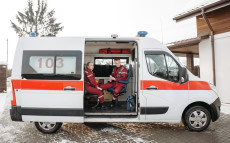- pathfindersAI
- Job Profile
Public Safety Telecommunicators
Summary
Public Safety Telecommunicators: Guardians of Emergency Communication
In a world where emergencies can strike at any moment, the role of Public Safety Telecommunicators (PSTs) becomes critically indispensable. These highly trained professionals are the backbone of emergency response systems, ensuring that aid reaches those in need swiftly and effectively. This essay delves into the multifaceted job of Public Safety Telecommunicators, explores their diverse responsibilities, essential skills required, educational pathways to enter the field, and their career prospects.
What They Do
Public Safety Telecommunicators are the unsung heroes who operate behind the scenes of emergency response operations. Often referred to as 911 operators, dispatchers, or emergency communication specialists, PSTs are responsible for answering emergency and non-emergency calls from the public, assessing the situation, and dispatching the appropriate emergency services. These services can include police, fire departments, medical personnel, and other emergency responders. Their quick thinking and efficient communication significantly impact the outcome of emergencies, from routine incidents to life-and-death situations.
Job Responsibilities
The job responsibilities of Public Safety Telecommunicators are extensive and demanding. Primarily, they answer and respond to emergency calls, ensuring that they extract precise and relevant information quickly. This information includes the nature of the emergency, location, and any immediate threats or needs. PSTs then prioritize these calls, often communicating with multiple agencies and units simultaneously.
In addition to dispatching the correct emergency personnel, they must provide immediate pre-arrival instructions to callers, such as first aid techniques or evacuation procedures. Public Safety Telecommunicators are also tasked with monitoring and coordinating the activities of field units, updating them with ongoing situation reports, and maintaining logs of all calls and actions taken during their shift.
Essential Skills
To excel in this challenging role, Public Safety Telecommunicators must possess a unique blend of skills. Strong verbal communication is paramount, as the ability to convey and interpret information accurately can be the difference between life and death. Quick decision-making and critical thinking skills are essential, as PSTs must assess situations rapidly and determine the appropriate response without hesitation.
Multitasking capabilities are also crucial, given that PSTs often handle multiple calls and dispatches simultaneously. Emotional resilience and composure under pressure are necessary to manage the stressful and sometimes traumatic nature of the job. Additionally, proficiency in operating sophisticated communication technology and understanding of local geography enhance their effectiveness in coordinating emergency responses.
Educational Pathways
Embarking on a career as a Public Safety Telecommunicator typically requires a high school diploma or equivalent. However, many employers prefer candidates with additional training or education. While some PSTs may choose to pursue an associate degree in public safety, criminal justice, or a related field, others may opt for specialized training programs. These programs, often offered by community colleges or technical schools, focus on emergency communications, telecommunications, and crisis management.
In addition to formal education, prospective PSTs usually undergo intensive on-the-job training. This training includes mastering the use of emergency communication equipment, learning protocols for different emergency scenarios, and developing the ability to handle high-stress situations effectively. Certification requirements for Public Safety Telecommunicators vary by state and employer but frequently include completion of state-approved training programs and passing certification exams.
Career Prospects
The demand for skilled Public Safety Telecommunicators remains robust, driven by the perpetual need for emergency services. According to the U.S. Bureau of Labor Statistics, employment of public safety telecommunicators is projected to grow in the coming years. This growth is partly attributed to increasing populations and the corresponding rise in emergency incidents.
Career advancement opportunities for PSTs are also promising. With experience and continued professional development, individuals can ascend to supervisory or managerial roles within emergency communication centers. Additionally, some may choose to specialize in certain areas, such as fire or police dispatch, to enhance their expertise and career trajectory.
Conclusion
Public Safety Telecommunicators play a critical role in the emergency response ecosystem, serving as the vital link between those in distress and the aid they require. Their extensive responsibilities, essential skills, and continuous demand underscore the significance of this career. Through a combination of education, training, and dedication, individuals can embark on a fulfilling path in public safety telecommunications, contributing to the safety and well-being of their communities. As society continues to navigate unpredictable challenges, the role of Public Safety Telecommunicators will remain a beacon of reliability and resilience.
Video
Compensation
| State | Median Salary | Median Hourly | Positions |
|---|---|---|---|
| AL | 36,770 | 17.68 | 2,440 |
| AK | 59,970 | 28.83 | 320 |
| AZ | 52,260 | 25.12 | 1,720 |
| AR | 35,810 | 17.22 | 1,210 |
| CA | 75,070 | 36.09 | 8,190 |
| CO | 62,090 | 29.85 | 1,620 |
| CT | 61,540 | 29.59 | 1,350 |
| DE | 49,930 | 24.01 | 250 |
| DC | 53,250 | 25.60 | 60 |
| FL | 47,700 | 22.93 | 5,800 |
| GA | 37,960 | 18.25 | 3,390 |
| HI | 52,860 | 25.41 | 210 |
| ID | 47,320 | 22.75 | 570 |
| IL | 58,040 | 27.91 | 3,660 |
| IN | 45,190 | 21.72 | 1,900 |
| IA | 48,980 | 23.55 | 1,120 |
| KS | 38,730 | 18.62 | 1,320 |
| KY | 38,790 | 18.65 | 1,490 |
| LA | 36,150 | 17.38 | 1,420 |
| ME | 49,940 | 24.01 | 640 |
| MD | 53,050 | 25.51 | 1,430 |
| MA | 56,760 | 27.29 | 2,610 |
| MI | 48,020 | 23.09 | 2,500 |
| MN | 64,740 | 31.13 | 1,480 |
| MS | 30,100 | 14.47 | 1,350 |
| MO | 43,870 | 21.09 | 2,180 |
| MT | 45,000 | 21.64 | 600 |
| NE | 46,100 | 22.17 | 710 |
| NV | 55,860 | 26.86 | 540 |
| NH | 50,040 | 24.06 | 670 |
| NJ | 53,410 | 25.68 | 4,310 |
| NM | 40,800 | 19.62 | 690 |
| NY | 60,170 | 28.93 | 5,120 |
| NC | 40,480 | 19.46 | 3,740 |
| ND | 45,680 | 21.96 | 270 |
| OH | 52,640 | 25.31 | 4,110 |
| OK | 35,040 | 16.85 | 1,890 |
| OR | 64,690 | 31.10 | 970 |
| PA | 49,440 | 23.77 | 3,460 |
| RI | 50,150 | 24.11 | 440 |
| SC | 38,310 | 18.42 | 1,470 |
| SD | 44,080 | 21.19 | 390 |
| TN | 41,400 | 19.91 | 1,330 |
| TX | 45,590 | 21.92 | 7,940 |
| UT | 49,570 | 23.83 | 710 |
| VT | 50,730 | 24.39 | 220 |
| VA | 45,810 | 22.02 | 2,980 |
| WA | 70,450 | 33.87 | 2,330 |
| WV | 36,780 | 17.68 | 830 |
| WI | 51,550 | 24.78 | 1,550 |
| WY | 45,300 | 21.78 | 340 |
Similar Occupations
In this area you will find other occupations that are close to the one you were viewing in tasks, knowledge and work environment. If the primary job profile you are viewing isn't quite to your liking, take a look around and see what else is available.
Basic and Premium Accounts have more alternative occupations available than the Free account.

Airfield Operations Specialists - 53-2022.00
An Airfield Operations Specialist oversees the safe and efficient movement of aircraft within the airfield, coordinating ground support activities and ensuring compliance with aviation regulations. They manage runway and taxiway conditions, communicate with pilots, and handle emergencies to maintain optimal airport operations.
-
$51,140/yr
Median Pay -
18,320
Number of Jobs

Ambulance Drivers and Attendants, Except Emergency Medical Technicians - 53-3011.00
Ambulance Drivers and Attendants, Except Emergency Medical Technicians, primarily transport patients to and from healthcare facilities in a non-emergency capacity, ensuring safe and timely arrival. They also assist with patient handling and may provide basic care and comfort during transport.
-
$32,580/yr
Median Pay -
11,520
Number of Jobs